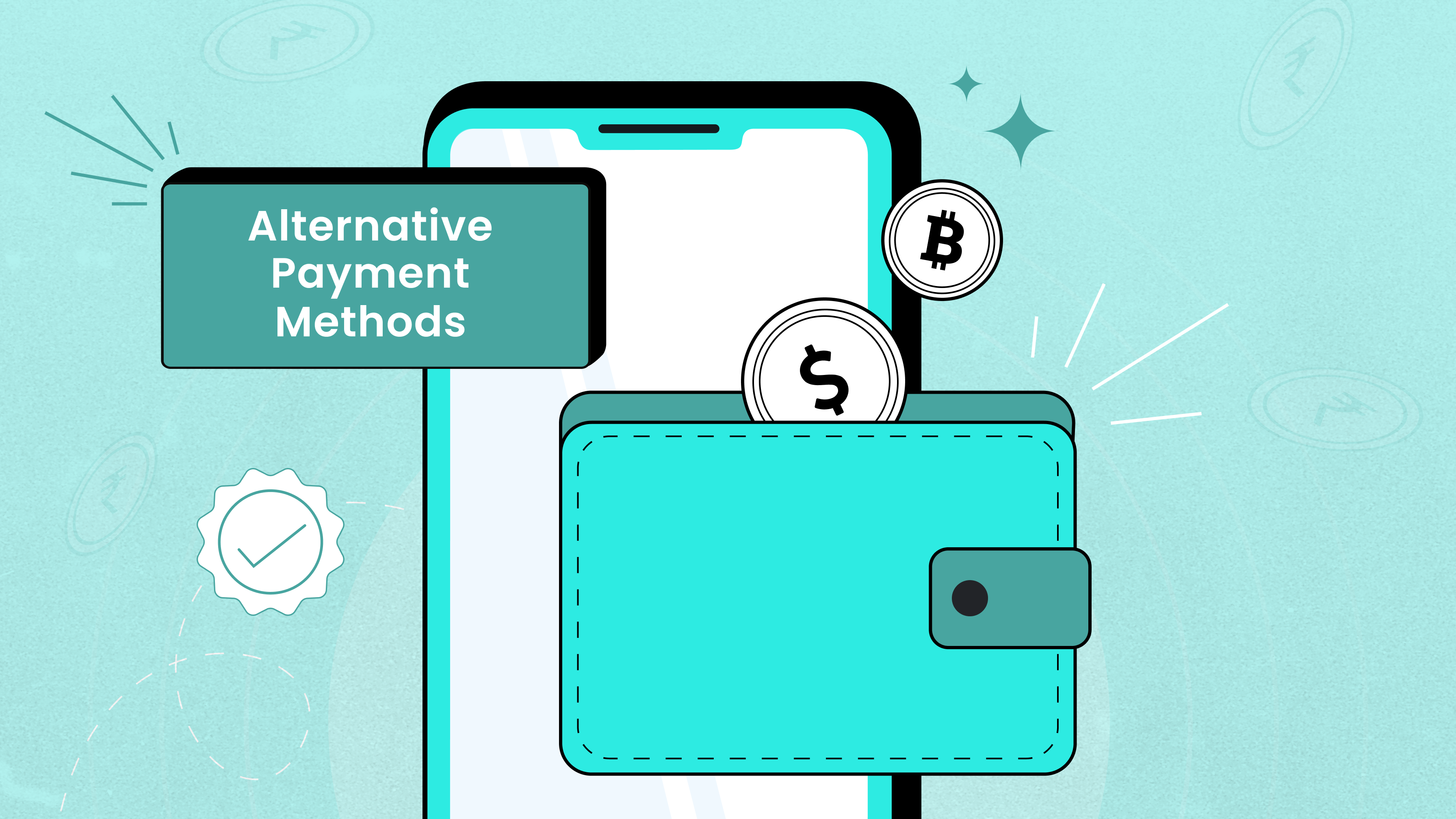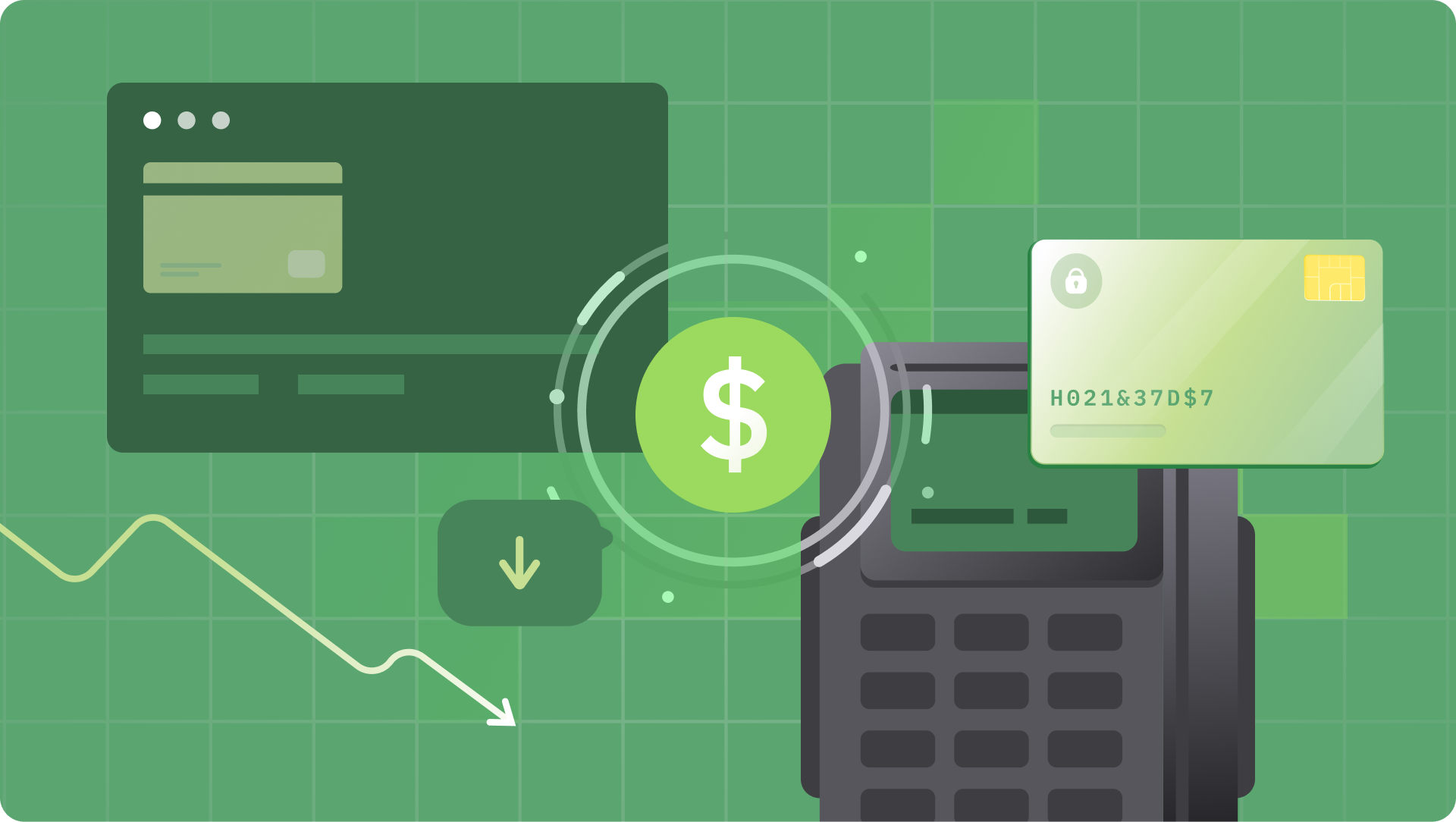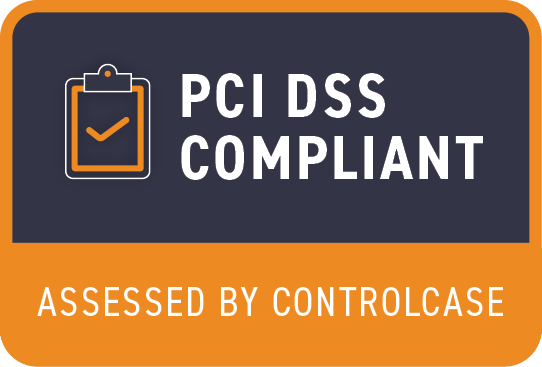Today, commerce is borderless and customers and revenue can come from anywhere in the world. However, when doing business, a key challenge is finding payment options that suit all the parties involved. Traditional payment methods like cash and cards cannot solve such problems. That’s where alternative payment methods (APMs) come in.
There isn’t one universally preferred APM. They differ as per local demographics and preferences. Hence, it is essential to understand how they work and how they can vary from scenario to scenario. With the objective clear, let’s dive into the basics of APMs and understand the following:
What Do Alternative Payment Methods Mean?
To put it briefly, alternate payment methods, also known as APMs, are any payment option that aren’t traditionally used. Few of the examples of alternative payment methods are digital wallets, bank transfers, cryptocurrencies, BNPL, etc. APMs, more often than not, aim to reduce dependency on traditional payment methods like cash and cards. These tech-driven solutions have recently become an option many businesses seek.
What Are The Types of Alternative Payment Methods?
Here are some of the common alternative payment methods that businesses might encounter and require:
- A2A (Account-to-Account) Payments: This payment method allows consumers to pay for goods and services online using direct online transfers from their bank account to the merchant bank account. Faster Payments Service (FPS) in the UK, Account Clearing House (ACH) in the USA, United Payments Interface (UPI) in India are some examples.
- Digital Wallets: Similar to bank transfers, digital wallets facilitate transactions without a physical or digital card. Some use near-field communication (NFC) technology, and some variants, like India’s UPI, may rely on scanning QR codes to make payments. Apple Pay and Google Pay are popular examples.
- Buy now, pay later (BNPL): Both consumers and businesses have used credit for years through cards or bank loans. But buy now, pay later brought the digital era to credit by taking the system online. If a purchase has to be made, the payment can be made in multiple, smaller repayment cycles to complete the transaction.
- Prepaid Cards: These cards let customers spend only the funds they have preloaded, unlike credit or debit cards. They are not linked to a bank account, ensuring users can't spend more than their available balance. Paypal prepaid mastercard, Revolut travel card and Amazon gift card are a few examples.
- Cryptocurrency: Complex computational equations are used to mine this digital currency. People choose to store it in two ways: offline hardware wallets or online exchanges or services (also known as hot wallets). Due to its complexity, high fees, and various local regulations, it hasn't entered the mainstream yet.
Some Major Local and Global Alternative Payment Methods Worldwide
Cards, direct debit, mobile wallets, and online banking are some of the most used payment methods globally. Out of which, debit and credit cards continue to remain popular choices. But the preferences are evolving.
According to Global Payments Report 2024 by worldpay, Digital Wallets accounted for 50% of the global e-commerce payment transaction value in 2023 and is forecasted to reach 61% by 2027. Buy Now Pay Later and Account-to Account (A2A) continue to flourish as the next popular alternative payment methods accounting for 7% and 8% of the transaction value respectively.
The above statistics clearly show that the consumers prefer having alternative payment methods to serve their needs. Popular Alternative Payment Methods region-wise are explained below.
North America: Alternative Payment Methods accounted for a total of 48% of e-commerce transaction value and 18% of POS spending with Digital Wallets being the most popular choice for payment in 2023. Apple Pay, Google Pay and Paypal continue to remain preferred choices in Digital Wallets and Klarna, Affirm, Afterpay gaining traction in the BNPL space.
Latin America: Latin America had the highest percentage of A2A payment penetration contributing to 20% of the regional e-commerce transaction value. Brazil’s instant payment system, Pix is leading the A2A payments. Other popular A2A payment service providers are PSE in Colombia and Yape, PLIN in Peru. Post-Pay is also gaining traction contributing as much as 4% to e-commerce spending with OXXO, 7-Eleven in Mexico and PagoEfectivo in Peru driving its adoption.
Europe: Europe follows a similar pattern as the Americas with almost 60% of the region’s e-commerce transaction value fueled by alternative payment methods. Digital Wallets are the leading choice of payment for e-commerce transactions fueled by global brands Amazon Pay, Apple Pay, Google Wallet and Paypal along with home grown wallet service providers such as MobilePay in Denmark, Pivo in Finland and Vipps in Norway. A2A payments was the next leading alternative payment method contributing as much as 18% and iDEAL, BLIK are popular brands to make note.
Asia-Pacific (APAC): In 2023 APAC consumers continued to lead the world digital wallet usage for a staggering 70% of e-commerce spending. A2A payments and BNPL follow contributing 4% each to the region’s e-commerce transaction value. Unlike other regions, Digital Wallets also account for a significant 50% share in the POS spend. The digital wallet usage is forecasted to further increase to 77% and 66% in e-commerce and POS spend respectively. There is a large variety of popular alternative payment methods that are used across the region. Some note-worthy brands are Paytm and PhonePe in India, Alipay and WeChat in China, PayPay in Japan and GrabPay in Singapore and Malaysia.
Middle East and Africa: Digital Wallets and A2A Payments are the popular choices among the alternative payment methods contributing 23% and 18% of the e-commerce spend respectively. Alipay+, PayPal, and WeChatPay have a strong presence in the region. However, local alternatives such as Bahrain’s BenefitPay, Mada in Saudi Arabia, Knet in Kuwait, and QPAY in Qatar are also holding steady. In South Africa, Careem Pay, e& money along with global brands Apple Pay, Google Pay and Paypal are projected to lead the digital wallets usage.
Benefits of Accepting Alternative Payment Methods
Given the sensitive dependence of payment methods on the checkout page, allowing customers to pay using APMs can significantly improve conversion rates among other benefits listed below.
- Unlock Greater Sales and Revenue: Customers can often abandon their carts if the payment options seem limiting. A broad range of choices can tackle this bottleneck.
- Smooth Customer Experience: Businesses that care for the convenience of their customers manage to retain them. That said, offering more payment methods creates the opportunity for a faster checkout process.
- Security Reasons: Many alternative payment methods use advanced security features. For example, making payments through digital wallets can actually reduce the risk of fraud.
- Potential Cut Down on Cost: Credit card transaction fees can be a significant expense for businesses. Other alternative payment methods may have lower fees. It may increase profit margins.
- Global Reach: If you sell internationally, accepting popular payment methods may be a wise idea. You can open up your business to a wider market. This may encourage more customers to engage with your services.
- Financial Inclusion: Alternative payment methods can help reach customers who may not have access to credit cards.
In short, it is a win-win for businesses and consumers if alternative payment methods are onboarded.
Choosing the Best Alternative Payment Method for Your Business
Every business and its customers will have distinct payment needs. Therefore, to choose which ones are preferred the most during checkouts, observations need to be made. It begins by understanding the customer base—who they are, where they live, and their payment preferences.
Next, evaluate the business’ needs. Consider how often transactions occur, the Average Transaction Value (ATV), and sometimes even the mode of sales. All these factors play a key role in deciding which payment modes suit a business.
As evident by now, there are many options for alternative payment methods. However, not all will fit a particular business’ requirements, especially when you compare their costs, including transaction and setup fees. Sometimes, even onboarding a certain payment option can be challenging and could deter other businesses from integrating it into their platforms as well. Businesses should also consider the scale of online transactions and the risk of frauds while choosing an alternative payment method.
Exploring Alternative Payment Methods with Hyperswitch
Alternative payment methods (APMs) will continue to grow in popularity, requiring efficient solutions to integrate them seamlessly. Hyperswitch can help with a robust payment platform that simplifies the process.
With APMs, experimentation is key to identify the best mix of payment methods for your business. However this would require significant engineering bandwidth to integrate the respective providers.Hyperswitch enables you to integrate and switch between various payment providers with little or no code. This lets you focus better on your business operations because payments are still critical but not core to your growth. Visit Hyperswitch product suite to know more.








